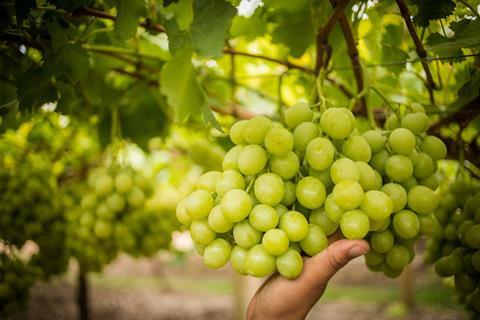South African growers have to evaluate up to 50 new varieties before they can make decisions on new plantings
Things are getting tougher for South African table grape growers in their choice of new varieties.

Given the long-term nature of the industry, and sharp rising cost of planting vineyards and bringing them into production, growers say they cannot afford mistakes.
While most growers are pleased with the fact that they have access to the world’s best breeding programmes, the sheer number of the new varieties they have to assess before deciding to establish commercial plantings makes their task almost impossible.
“There are now close to 50 new varieties on offer to us and they are aggressively marketed by the various breeding companies,” says Alwyn Dippenaar, managing director of Dippenaar Choice Fruit in the Orange River. “For us it is hard to choose varieties which will give us a full cover throughout the season.”
Previously South African growers told Eurofruit that there were perhaps only about six varieties regarded as very good to excellent in terms of production and marketing requirements.
These varieties could dominate the South African industry in the years ahead.
“What is needed are other similarly good varieties from early to late in the season which will allow us to market our range of, particularly, white and red seedless varieties seamlessly throughout the season,” says veteran Hex grower Leon Viljoen, who has extensive experience in evaluating and selecting new varieties.
The debate on what to plant continues to dominate talk in the vineyards – particularly after two tough seasons.
In the past growers were very keen to take risks in order to stay ahead in the new cultivar game. Cultivars that showed initial promise but ultimately failed after a few seasons were quickly removed and replaced.
Growers now point out that in the present climate of cost increases they cannot afford to take such risks.
Producers are also saying that if table grapes are to take their place competing with other categories on the world’s markets, it will be increasingly important to have a presence in the form of branded cultivars or ranges of cultivars.
This will create confidence in certain products, which will hopefully bring increased profits back to the farm.
As it stands grapes are only offered as either red, white or black seedless varieties. “There is no promise of exceptional taste, flavour and quality in that sort of branding,” says Dippenaar.
There are exceptions, such as the latest announcement by international table grape breeder Sun World, which is launching a new brand of red seedless grapes.
Sun World has also announced that it is introducing a global Autumncrisp brand, which will be supplied by participating growers as the production season moves around the year annually.
The group’s Ruby Rush brand will incorporate a range of early season red varieties with similar appearance, colour and taste. Table grape breeder Paola Barba said the first of this range of varieties will be Sugrafiftythree.
Whether table grape growers and retailers around the world are ready for this kind of development remains to be seen.
Well-known Namibian table grape personality Andre Vermaak says that by and large consumers do not pay more for different cultivars in the same category.
The grower must survive and he will therefore be inclined to plant cultivars that offer good volumes, bring production costs down, and have good quality, shelf-life, taste and colour. “Then we have a stable market, and all make a good living,” he notes.
Growers cannot afford to replant every few years because of wrong choices, Vermaak adds. “There are now excellent varieties which will give good options for growers.”
Interestingly, one of the most successful South African retail fresh produce brands, Flavour Burst, which is used to identify exceptional varieties of different categories, is close to the intended use of Ruby Rush.
Flavour Burst is used to promote excellent nectarines, apples, and various berries in Woolworths outlets, but it is not yet used for table grape varieties.
“We need to do something to rationalise a bit,” says Dippenaar. “The breeding programmes have exploded with increasing numbers of new varieties which do not make our lives easier.
”There is no sense in building brands for varieties which may only be on the shelf for a couple of weeks and they will have to be in the consumer’s eye.”



